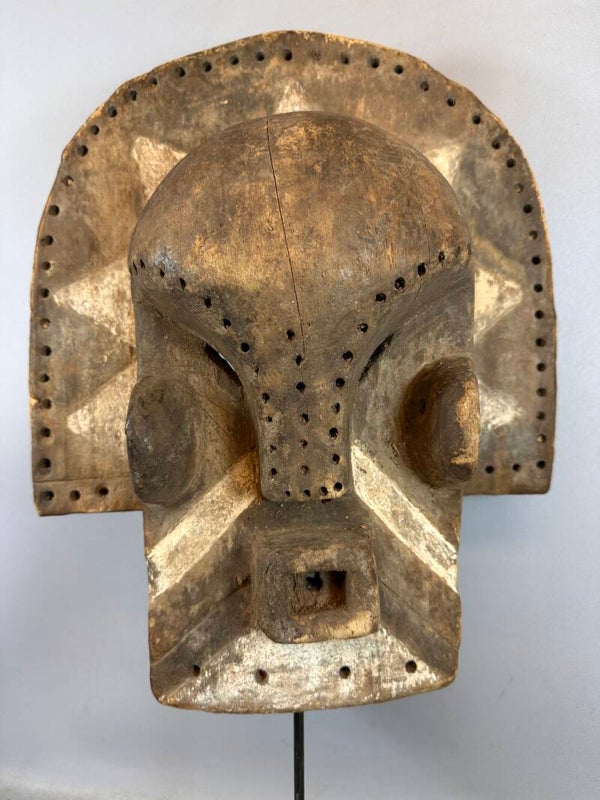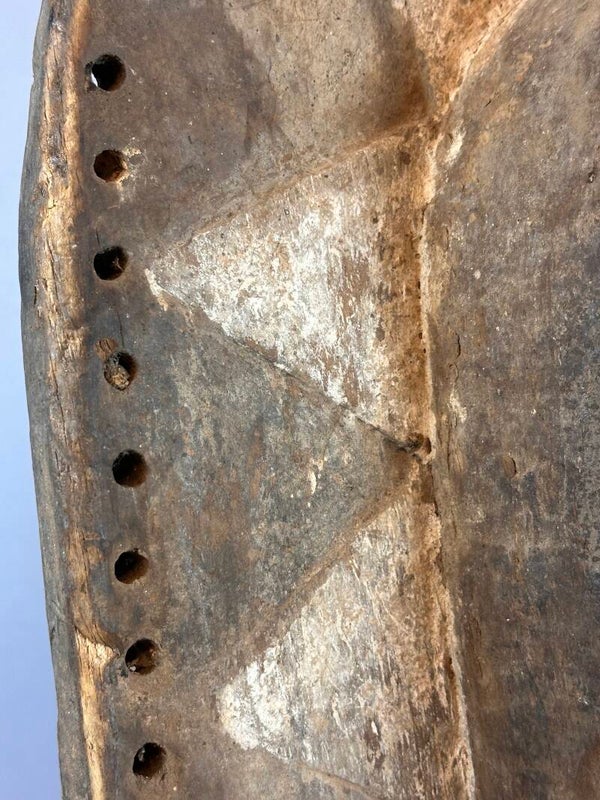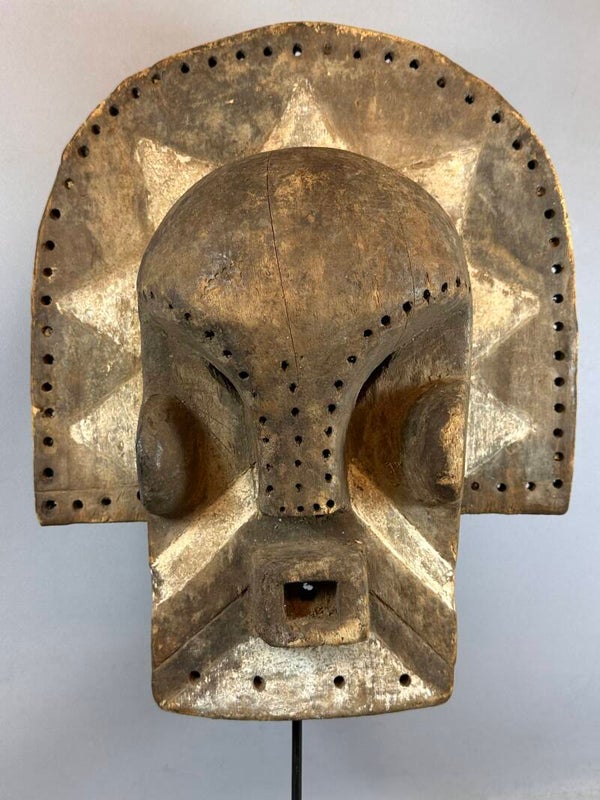250301 -Large Extremely Rare Antique African Motetela or Tetela mask - DR Congo.
Extremely Rare Antique African Motetela mask from the Tetela people - Congo.
Dimensions: height: 43 cm; width: 35 cm; depth: 18 cm.
Type of wood: Ricinodendron Rautanenii.
Provenance: collected on early thirties by comboni fathers in Kasongo, Belgian Congo, nowadays Maniema province, Democratic Republic of Congo.
This Motetela mask is dated from the thirties of the 20th century and comes with a certificate of authenticity.
Substances: the colours of the mask are a bit faded. The black dye has been identified as charcoal. The white dye has been applied by the use of riverbed clay, a type of clay similar to kaolin, mixed with yellow ochre (limonite dust). The mask has been repainted several times, as usual for most of tribally used masks from Tetela tribe. Looking carefully at the surface, it's possible to see three levels of colour, of which the last appears to be the white dye all over.
Overall condition: the mask shows general wear and light grey patina. The wood is very fragile due to its old age. Considering its age, the mask is in great shape.
The Tetela people (or Batetela in the plural) are a Bantu ethnic group of the Democratic Republic of the Congo, most of whom speak the Tetela language. The Tetela people live between Lusambo and the Upper Zaire River in Sankuru and Maniema in the Kasai Oriental and Kivu regions of Democratic Republic of the Congo.
They are fishermen and farmers who raise cassava, bananas, and kola nuts. The Tetelas speak a Mongo language, which is part of the larger Bantu* linguistic family. The Tetelas are closely related to the Kusus and did not really separate from them until the late 1800s when Afro-Arabs and Belgian* colonial authorities arrived in the region. They had extensive contacts with the Afro-Arabs, and in the process many of them adopted Islam. The most famous Tetela in Zairean history was Patrice Lumumba.
The name Motetela comes from a god named Motetela, meaning either "he who laughs not" or "he at whom one may not laugh." Like other Bantu groups, the Tetela have a large and colorful set of proverbs that are used for a wide variety of purposes, from rebuking to encouraging, usually by adults.
According to Emil Torday (who studied the tribes of the Congo between 1908 and 1909), the Tetela originated on the right bank of the Lomami River and migrated to their present territory at some unknown date. In 1869–70, some Tetela groups came into contact with Tippu Tip, an Arab slave trader from Zanzibar. Following this, the chieftain Gongo Lutete began working with Tip and the Arabs to lead the Batetela in slave raids against the Luba people in Kasai.



















